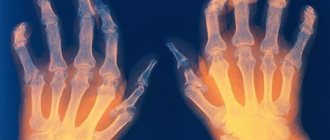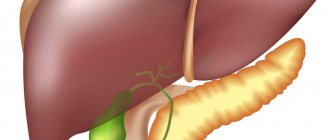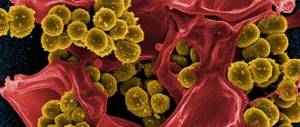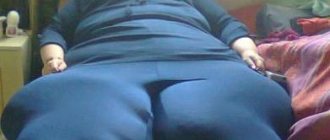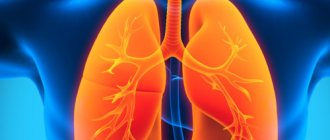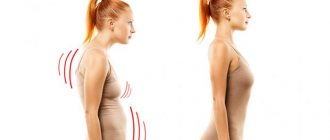What it is?
Keep in mind! With posterior rhinitis, the mucous membrane of the larynx becomes inflamed.
This layer provides warming, humidification and purification of the air entering the respiratory tract from harmful bacteria.
The inflamed mucosa can no longer cope with such tasks , and in addition to inflammatory processes in the membrane itself, there is a risk of infection entering the bronchi and lungs .
In adults, this pathology is not observed very often.
But if it develops and is not treated, the inflammatory processes constantly intensify and no longer acquire a local character, but spread to the entire surface of the laryngeal mucosa.
Typically, posterior rhinitis does not occur spontaneously and as an independent disease.
It is worth noting! This is almost always a consequence of untreated viral and bacterial respiratory pathologies.
The most susceptible to the disease are people with chronic respiratory diseases, damage to the immune system and disorders of the immune system during long-term treatment with antibiotics.
What should you pay attention to?
The inflammatory process leads to dry mucous membranes. This makes breathing difficult and worsens the general condition, and also delays treatment. To prevent this, it is necessary to frequently ventilate and humidify the air in the room where the sick child is. The air temperature should be maintained at 20-220C.
For inflammatory diseases of the upper respiratory tract, drinking plenty of fluids is indicated.
It is better to place a child with posterior rhinitis on a high pillow. This will improve the discharge of mucous secretions and make breathing easier.
To remove mucus from the nose of infants, you can use a rubber bulb. Older children should be encouraged to blow their nose more often so that there is no congestion in the nose and nasopharynx and treatment proceeds faster.
When treating infants, instead of rinsing the nose, it is better to treat the mucous membrane with cotton wool soaked in a weak solution of baking soda, after which you can drip the drops prescribed by the doctor. This should be done before each feeding of the baby.
Before instilling drops, the child’s head must be tilted back so that the medicine reaches the nasopharynx and the treatment is effective.
Return to contents
Kinds
Posterior rhinitis can be classified according to several criteria that determine the characteristics and features of the course of the disease:
- By origin (neurovegetative, bacterial, vasomotor, allergic, viral).
- According to the nature of the inflammation (catarrhal form with the release of clear mucus and purulent form with the formation of mucus, including impurities of pus).
- By intensity (chronic and acute rhinitis).
Treatment and prevention
Complex therapy for this disease includes several methods. These include:
- drug treatment;
- physiotherapeutic procedures;
- methods of strengthening the immune system.
At the first appearance of rhinitis, it is very important to correctly identify its cause in order to determine the optimal treatment option.
In the case of an allergic type of disease, it is necessary to include antihistamines in treatment. If the cause of the disease is a virus, you need to focus on antiviral drugs. Bacterial rhinitis is recommended to be treated with antimicrobial agents.
Regardless of the cause of rhinitis, the first step is to relieve the main symptoms.
First you need to take measures to relieve nasal congestion and make breathing easier. This is especially important when it comes to manifestations of the disease in children. Vasoconstrictor drugs – nasal drops and sprays – can help in this case.
It is also very important to clear the nasopharynx cavity of accumulated mucous fluid. This can be done by washing with antiseptic solutions or sea water. If rhinitis is present in infants, then such rinsing is done with saline solution using a special rubber bulb.
Nasal rinsing technique
Sometimes treatment of rhinitis involves the use of antibiotics. They are used in case of prolonged symptoms, severe fever or complications. This method of combating the disease should only be used with a doctor’s prescription.
Preventive measures that help reduce the likelihood of developing rhinitis in children include hardening procedures, a balanced diet and regular exposure to fresh air.
In order to strengthen the immune system and speed up recovery, it is very important to take care of the quality of the patient’s diet. It is necessary to ensure the presence of vitamins and beneficial microelements in food. Such methods are also useful for adults who are predisposed to various respiratory diseases.
If you notice symptoms of posterior rhinitis in yourself or someone close to you, you must immediately consult a doctor, conduct a diagnosis and immediately begin treatment for the disease. Otherwise, there is a high probability of complications, as well as concomitant diseases, one of which is maxillary sinusitis, or sinusitis. Coping with such diseases will be much more difficult.
Symptoms
Note! Posterior rhinitis has no special characteristic symptoms: all accompanying symptoms may accompany other respiratory diseases.
Therefore, to make an accurate diagnosis, it is necessary to focus not on symptoms, but on the results of an examination by an otolaryngologist.
However, there are reasons to suspect posterior rhinitis with the following manifestations of a cold :
- the appearance of dry crusts in the nose;
- constant formation of thick mucous discharge, leading to a feeling of stuffiness and the desire to blow your nose;
- bouts of sneezing;
- nasal breathing disorders;
- severe lacrimation;
- moderate cough that occurs when the nasopharynx is irritated by the resulting accumulations of mucus on its surface;
- change in voice timbre, appearance of nasality;
- sore and sore throat;
- dry mouth;
- general symptoms of intoxication (headaches, loss of appetite, general malaise and weakness);
- increase in body temperature within 37-38 degrees);
- sometimes congestion in the ears.
Symptoms of posterior rhinitis
In order to promptly begin treatment of posterior rhinitis, it is necessary to correctly determine the symptoms of the disease. The first thing you should pay attention to is an unpleasant feeling in the nasopharynx. If an unpleasant symptom in adults or children does not go away within several days, most likely the person is on the verge of illness.
In most cases, the disease manifests itself as:
- strong burning sensation;
- dryness;
- nasal breathing disorders.
If the disease is observed in a small child, then to the symptoms listed above you can add vomiting, mucous discharge mixed with pus from the nasal passages, lacrimation, itching in the nasal cavity and active sneezing.
Children are more difficult to tolerate this disease. They may develop a fever and symptoms of a common cold, such as a sore throat and general weakness.
In addition, posterior rhinitis is characterized by such manifestations as impaired hearing quality, changes in speech, the formation of crusts in the sinuses, enlargement of the submandibular lymph nodes, headache and severe cough.
Infants often require hospital treatment, since impaired nasal breathing does not allow full treatment and even basic feeding of the baby.
Posterior rhinitis is a disease that requires immediate treatment. That is why it is necessary to find out how to treat this diagnosis at its first manifestations. This is especially true for children, since all their diseases progress more rapidly than in adults.
What drugs are used for treatment?
Treatment of posterior rhinitis is easy, and the prognosis is generally favorable.
Know! Basic therapy consists of the complex use of medications, which are prescribed based on the existing symptoms, etiology of the disease and its severity.
Antihistamines
The main purpose of such drugs is to eliminate the symptoms of allergic rhinitis.
But with inflammation of the posterior wall of the nasopharynx, such drugs can also help, as they eliminate any swelling and, in the case of lesions of the respiratory tract, make breathing easier .
Antihistamine tablets and nasal drops are not recommended to be taken for more than one week for infectious rhinitis.
You should know! If the disease occurs due to contact with allergens, an individual treatment regimen is drawn up.
Such means include:
- Avamis . A potent hormonal agent in the form of a spray for nasal use. The drug is recommended for use only for severe rhinitis, and treatment should be stopped as soon as obvious symptoms of the disease disappear. Long-term use of Avamis is not only addictive, but can also cause nosebleeds.
- Euphorbium compositum . A homeopathic remedy that helps eliminate inflammation and swelling and reduce allergic manifestations. Additionally, it has a moisturizing effect on the mucous membrane. Recommended for the treatment of children and the formation of adenoids and polyps in the nasal passages.
- Nasonex . A complex action drug from the group of glucocorticosteroids. Effective for vasomotor and allergic rhinitis, as well as for lesions of the paranasal sinuses. The medicine can be used to treat children starting from two years of age.
Anti-inflammatory
Stay up to date! Such remedies for posterior rhinitis are used infrequently and mainly only in the form of nasal drops and for obvious swelling.
Adult patients usually do not need such drugs , since the immune system, even with severe colds, prevents the development of serious inflammatory processes.
Such means can be used:
- protargol;
- ibuprofen;
- ibufen;
- ketorolac;
- paracetamol;
- aspirin.
Antiviral agents
A special group of drugs that is effective only against viruses , although some of these drugs have a complex effect, strengthening and activating the immune system .
For your information! For the treatment of posterior rhinitis in adults, the following medications from this group are recommended:
- arpetol;
- Viferon;
- remantadine;
- influenza;
- Tamiflu;
- anaferon.
Antibiotics
Antibiotics, like antivirals, also destroy only representatives of one group of microorganisms: bacteria.
But with posterior rhinitis, the need for such drugs rarely arises : only in one case out of ten such a disease is of bacterial origin.
Note! If this form is diagnosed, antibiotics are prescribed in the form of tablets, sprays and nasal drops:
- pinosol;
- amoxicillin;
- polydex;
- azithromycin;
- isofra;
- lincomycin;
- clarithromycin;
- erythromycin.
What is rhinitis, and how does it happen?
Posterior rhinitis is a disease caused by an inflammatory process of the mucous membrane of the upper respiratory tract - the nasopharynx and larynx.
Pathological manifestations can also affect the area of the pharyngeal lymph ring and tonsils. This disease is characterized by the release of large amounts of fluid from the nasal cavity. In this case, breathing becomes difficult, the patient experiences unpleasant sensations in the places where the disease is localized. The causes and symptoms of the disease can be different and depend on the type of pathology. The following types of rhinitis are distinguished:
- bacterial;
- viral;
- allergic;
- vasomotor.
- Bacterial and viral rhinitis. Occurs due to infection entering the body. In the case of a bacterial form, the cause of the disease is microorganisms, such as streptococci, staphylococci, etc. If the disease is viral in nature, then it is caused by influenza viruses, ARVI, etc. entering the body.
Allergic rhinitis. Develops in people who have hypersensitivity to various allergens. It occurs after contact with irritants and, in fact, is one of the manifestations of allergies. This type of disease is quite common in children, since their mucous membrane is quite delicate and is exposed to various irritants. In this situation, it is important to identify the allergen as soon as possible and reduce or completely eliminate the child’s contact with it.- Vasomotor rhinitis. If a child suffers from a vasomotor type of disease, then we are talking about an inadequate reaction of the body to ordinary irritants, such as the smell of spices or cold air. The cause of the development of this type of rhinitis is an organic disorder of the respiratory or nervous system.
Prevention measures
For preventive purposes, to prevent damage to the posterior wall of the nasopharynx, it is recommended to follow the following rules :
- All infectious diseases of the respiratory tract and oral cavity must be treated promptly and correctly .
- Throughout the year, and not just in winter, it is necessary to maintain the state of immunity. To do this, you need to drink vitamin complexes from time to time and “improve” your diet. To do this, you need to introduce more fresh vegetables, fruits and herbs, and also not neglect moderate physical activity.
- If you are prone to frequent respiratory diseases, it is advisable to give up smoking, drinking alcohol, and eating too spicy and salty foods . You should also try to avoid any mechanical damage to the mucous membranes of the larynx.
- People who are susceptible to allergic reactions (seasonal or due to contact with certain allergens) need to undergo a test to identify such irritants . It is necessary to exclude contact with them, and also regularly take a preventive course of taking antihistamines.
- During the cold season, you need to avoid hypothermia by dressing appropriately for the weather.
Main reasons
In most cases, the cause of the disease is infection. It can be bacterial in nature, for example, staphylococcus, or viral - influenza, ARVI, etc. Inflammation caused by infection leads to the development of an acute form of rhinitis, which can become chronic in the absence of the necessary treatment.
In this situation, it is important to recognize whether rhinitis is an independent disease, or whether it acts as a symptom of another viral disease. In the second case, the emphasis should be on treating the underlying disease, and not on relieving the symptom.
Posterior rhinitis can also occur due to the body's hypersensitivity to various irritating factors, that is, allergies. The symptoms of this form of rhinitis are very similar to the manifestations of an allergic reaction.
In the fight against this type of disease, it is very important to take all necessary measures to reduce sensitivity to the irritant.
The influence of the external environment on the development of rhinitis cannot be ruled out. Quite often, the appearance of the disease in children can be caused by hypothermia or mechanical damage to the upper respiratory tract.
In each situation, treatment may be prescribed differently. Therefore, it is very important to identify the true cause of rhinitis and immediately begin complex therapy.
Treatment
Below we will tell you how to treat such a problem using folk remedies. But first you must think about what factors led to this disease and try to eliminate them. Dress the patient warmly and try to reduce contact with potential sources of infection. Take care of your immunity - to do this, introduce foods rich in vitamin C into your diet.
Sometimes nasopharyngitis appears against the background of dehydration. Therefore, the patient should increase the amount of fluid he drinks. Also humidify the air in your apartment.
Saline rinsing
If your child constantly has mucus flowing down his throat, use the well-known method - rinsing with a solution of sea salt. To do this, dissolve a teaspoon of the product in a glass of water at room temperature. But in order for the solution to get into the nasopharynx and not into the nose, you need to follow some rules. Place the patient on the bed and tilt his head back strongly. Place a few drops into each nostril. Now the patient must lie down for several minutes so that the medicine acts in the area of inflammation. Repeat the procedure several times a day.
After this, rinse your mouth with a saline solution to treat the oropharynx. Upon completion of the procedures, drop a few drops of any vegetable oil into your nose to protect the mucous membrane from drying out.
Sage
This plant has a pronounced bactericidal effect, so even advanced chronic nasopharyngitis can be cured with its help. Boil a tablespoon of herb in a glass of water, cool to room temperature and strain. Adults should inhale it through each nostril and then spit the concoction out through the mouth. To treat a child, draw the drug into a syringe, place the little patient on his back, tilt the tin back and inject the decoction into the nose with the syringe. Repeat the procedure several times a day.
It is also useful to rinse the mouth with a decoction of sage.
Carrot juice with butter
Grate the carrots on a fine grater and squeeze through cheesecloth. Mix the resulting juice with the same amount of vegetable oil. This substance needs to be instilled into the nose several times a day, and your illness will go away.
Peach oil
If your child has mucus running down his throat, try peach oil treatment. It can be used in two ways. The first way is to put it in your nose several times a day. The second way is to take a teaspoon orally every morning (to increase the body's resistance). Peach oil has a whole range of vitamins and natural antibacterial substances, it will definitely help you.
Sea buckthorn oil
Like the previous remedy, sea buckthorn oil has beneficial properties, so it can treat nasopharyngitis. Place it in your nose with your head tilted back. Repeat this procedure several times a day.
Cherry juice
This drink improves immunity in adults and children, so it is a must-drink for anyone who suffers from respiratory diseases. Just use homemade juice, not store-bought juice.
There is a good recipe based on cherry juice: heat a glass of this product to a temperature of 50C, add a tablespoon of honey and a pinch of cinnamon. Drink this medicine in small sips so that it treats the nasopharynx well. You can also simply rinse your mouth with this product.
Aloe
The healing power of aloe juice will help cure the problem. For the procedures, we will need old leaves of the plant (they must be at least 2 years old). Cut them off and refrigerate for 2 weeks, then wash the leaves, remove the spines and skin, and mash the pulp. Add the same amount of almond oil to it and mix. Place this mixture in your nose several times a day. This should be done in a supine position so that the medicine penetrates well into the nasopharynx area. Additionally, take aloe with oil orally to strengthen the immune system and kill the infection.
Kalanchoe
It treats nasopharyngitis and Kalanchoe no less effectively. Treatment is carried out as follows: squeeze out the juice of a freshly picked plant, mix half and half with distilled water and drop it into the nose. The product may sting a little, but it's not scary.
Inhalations
Thermal procedures help very well with your problem, since exposure to elevated temperatures improves blood circulation in the tissues and reduces inflammation. Therefore, be sure to include inhalations in your treatment program. We recommend adding medicines to the water over which you will steam: chamomile flowers, hop cones, sage herb, sea buckthorn oil, “Star” balm, cinnamon or juniper essential oils. After inhalations, it is not recommended to go outside - it is better to rest under a warm blanket, drink warm milk with honey.
Propolis
You can also treat snot with propolis, but only if you are not allergic to bee products. Buy a ready-made alcohol tincture at the pharmacy, or prepare it yourself (to do this, soak 5 g of propolis in 100 ml of alcohol and leave for 15 days). Dissolve a tablespoon of tincture in a glass of cold water. Draw this remedy into each nostril one at a time. Repeat the procedure every day, morning and evening.
Adults can take propolis tincture 20 drops orally three times a day on an empty stomach. This will increase the body's overall resistance to infections and eliminate the inflammatory process.
Laundry soap
This is a rather unpleasant method, but very effective. It is suitable for adults only. Dissolve a piece of laundry soap in warm water and suck this solution into your nostrils to thoroughly rinse your nasopharynx. Repeat the procedure morning and evening until complete recovery.
Calendula
To treat nasopharyngitis, grind fresh calendula petals with honey (these ingredients are taken in equal proportions) and place in the refrigerator. Eat a tablespoon of this product once a day. For children, the dosage is reduced to 1 teaspoon. Calendula not only cleanses the respiratory tract, but also improves immunity.
Indian recipe
Prepare nasal drops according to a special recipe that came to us from India:
Olive oil – 10 tablespoons;
Pour olive oil over the sage and simmer in a closed container for 2 hours, stirring constantly. Then strain the substance, add neem oil and tea tree oil, cool. Place this remedy in your nose every morning, and we will never have problems with the respiratory system.
For certain reasons, the patient’s protective functions of the body do not always work at the right time. Therefore, in certain situations, the patient may develop inflammation of the nasopharynx, which will be accompanied by acute symptoms. Most often, nasopharyngeal diseases are provoked by an increase in body temperature and the formation of copious amounts of secretions. If the patient begins treatment in a timely manner, he will get rid of the signs of the disease at a very early stage. If the moment is missed, the patient will notice the formation of discharge from the nasopharynx.
To eliminate the formation of constant mucus on the back wall of the nasopharynx, it is necessary to find out the cause of the disease. Only then will the patient be able to begin the necessary treatment and restore lost functions. Treatment for dysfunction of the nasal cavity must be prescribed by the attending physician, otherwise there is a risk of complications and deterioration of well-being. For the same reason, it is forbidden to use any traditional methods.
In most cases, it flows along the back wall due to viral penetration.
The pathogen, penetrating into the nasal cavity, provokes a number of acute complications, so the first step is to find out its type.
Basically, this type of inflammation is formed due to the development and reproduction of rhinoviruses and coronaviruses.
You can get rid of them only with complex treatment using antiviral drugs.
Bacterial proliferation
If the inflammation is not due to viruses, it is worth checking the nasopharynx cavity for the presence of bacteria
.
Posterior rhinitis quite often occurs due to the proliferation of streptococci, staphylococci or other pathogenic microorganisms.
It is difficult to get rid of them, so the patient faces a long treatment period.
It is worth preparing for the fact that the inflammation will be long-lasting and painful.
Measles, rubella and scarlet fever
Inflammation in the paranasal sinuses
always accompanied by accumulation of mucus and the formation of pus. As sinusitis progresses, mucous secretions can flow down the nasopharynx, causing the formation of unpleasant symptoms.
Treatment of sinusitis should be under the supervision of a doctor
. For safety reasons, medications should not be used without consulting a doctor.
You should not ignore the advice of a specialist, since if the rules of treatment are not followed, sinusitis can worsen. If there is a risk of complications, the patient is prescribed surgery.
Pharyngitis
If there is inflammation of the mucous membrane or dysfunction of the lymphoid tissue of the pharynx, the patient is diagnosed with pharyngitis
. The formation of mucous secretions that move to the back wall of the nasopharynx during this process is natural.
Most often, patients are diagnosed with viral pharyngitis, which occurs due to the development of adenoviruses, rhinoviruses, and parainfluenza virus
and so on. In addition, pharyngitis may appear due to the consequences of acute respiratory diseases. The bacterial form of inflammation is less common, but also occurs.
The type of pharyngitis must be diagnosed by an ENT doctor.
Sinusitis
The consequences of a common runny nose are irreversible, and if the patient does not cure the inflammation in time, the patient may develop acute or chronic sinusitis.
The disease is always accompanied by secretions that flow down the nasopharynx, causing many unpleasant minutes.
When treating sinusitis, the first step is to determine the root cause.
Treatment of sinusitis begins with determining the location of the disease and establishing all the factors of its formation. After this, the patient is prescribed drug therapy.
Other reasons
Prolonged flow of mucus through the nasopharynx may occur as a result of environmental exposure. Other factors in the formation of such a process include:
- bad ecology;
- unfavorable living conditions;
- professional activities associated with constant contact with chemicals;
- allergic reaction to pet hair, flowers, dust and other types;
- smoking;
- excessively dry air;
- lack of moisture in the body;
- hormonal imbalance;
- pregnancy;
- long-term use of antibiotics.
In all cases, the patient needs the help of doctors and timely therapy.
It is important to establish the causes and treatment of mucus flowing down the back wall of the nasopharynx as soon as possible in order to prevent the formation of a chronic form of the disease.
In order to permanently get rid of discharge and runoff down the nasopharynx, it is necessary to begin drug treatment. At the time of conducting research and identifying the factors causing the disease, the doctor may prescribe several treatment procedures:
- Every day it is necessary to rinse the nasopharynx with specialized solutions or purified sea water.
- When preparing for bed, you should use nasal sprays that stop the formation of mucous secretions.
- The patient should sleep on a high pillow or raised corner of the bed. Thanks to such sleep, the patient will be able to prevent phlegm from flowing into the throat.
- Every day the patient should moisturize the nasal mucosa using inhalations based on essential oils and medicinal herbs.
- To prevent dryness in the nasal cavity, use various oils.
When using medications, try to administer them so that the drug reaches the roof of the nasal cavity.
To do this, medications are best administered in a lying position or with the head tilted back. After administering the drug, you should maintain this position for several minutes.
Drug treatment
After establishing all the causes and factors for the formation of the disease, the specialist may prescribe the following medications:
- Drops and sprays for constricting blood vessels in the nasal cavity - Naphthyzin, Nazivin, Otrivin. Keep in mind that they are addictive, so you can use vasoconstrictors for no more than five days.
- Moisturizing medications based on sea or ocean water - Aqualor, Dolphin, No-Sol, Aqua-Marie, Humer and others. They can also be used to sanitize the nasal cavity. Their action is aimed at liquefying mucus, which will have a beneficial effect in case of abundant discharge of pus. Drugs of this kind have virtually no contraindications or side effects, so they can be used to treat even young children.
- To provide an antiseptic effect and moisturize the mucous membrane, drops based on essential oils are needed. Such drugs, for example, Pinsol, improve the patency of the nasal passages and promote the discharge of sputum.
- During treatment, local antiviral drugs are prescribed. In each case, medications are selected individually, since it is important to know the cause of inflammation. Doctors usually prescribe oxolinic ointment.
If the inflammation is localized not only in the nasopharynx, but flows into the throat, the following measures must be taken:
- Gargle your throat with a solution of salt and soda five times a day.
- It is useful to add antiseptic agents to sanitization solutions. Use them after every meal.
- To provide resistance in bacteria, the doctor prescribes Chlorophyllipt tablets. They need to be dissolved every day, five pills.
- To provide an analgesic effect, Analgin, Ibuprofen and others are needed. You can choose the drug yourself.
In addition, the patient needs vitamins and immunostimulants.
They will enhance the functions of the body’s defense systems and improve the patient’s mood.
In addition, the patient should review the diet. Any spicy or very hot foods should be excluded. During illness, it is best to eat vegetables, fruits and light soups, and you should also drink plenty of water.
Classification of the disease
Depending on the characteristics of the course of the disease, experts distinguish acute and chronic forms of rhinitis in children. The first type is characterized by rapid development, accompanied by pronounced symptomatic manifestations.
If timely medical care is not provided, it becomes chronic.
This type is characterized by a long course of the disease (from one week to several months) and less pronounced symptoms.
In addition, based on the cause of the disease, it is customary to classify the following types:
Vasomotor. Develops due to disruption of blood vessels. As a rule, it is diagnosed in people suffering from astheno-vegetative syndrome, somatoform autonomic dysfunction and arterial hypotension.- Allergic. Inflammation of the nasal mucosa caused by exposure to an allergen.
- Medication. It occurs when taking certain medications (often, various antipsychotics and medications for high blood pressure lead to such a reaction).
- Traumatic. Develops in case of mechanical damage to the nasal mucosa (frostbite, cuts, burns).
- Viral. The cause is damage to the body by various viral agents.
- Bacterial. Its pathogenesis is based on exposure to pathogenic microorganisms.
- Rhinitis in pregnant women. The development is caused by physiological changes that occur in a woman’s body during pregnancy (deterioration of tone).
The clinical picture of the disease may indicate the following types:
Atrophic. The main symptoms are a feeling of dryness and the formation of crusts on the nasal mucosa.- Catarrhal. The most common type. Symptoms include the development of inflammatory processes in the nasal mucosa, accompanied by swelling.
- Hypertrophic. Due to the enlargement of the tissues of the nasopharynx, a runny nose and severe nasal congestion occur.
There is also anterior rhinitis. Its difference from the posterior form lies in the location of the inflammation, which affects the anterior nasal areas.
Etiology
Most often, the cause of the development of inflammatory processes is bacterial or viral infections. Their contact with the nasal mucosa leads to acute rhinitis. If treatment measures are not taken, it becomes chronic. There is also a possibility that rhinitis is a symptom of other infectious diseases, for example, diphtheria.
If signs of posterior rhinitis are detected, you should immediately consult a specialist. Delay is fraught with very serious complications.
One of the predisposing factors, undoubtedly, includes the constant exposure of the nasal mucosa to various foreign particles, harmful chemical compounds and other external irritants. Serious disturbances in the blood supply to the tissues of the nasopharynx, severe hypothermia, and traumatic injury also play a significant role.
The cause of allergic rhinitis is individual hypersensitivity to allergenic substances that enter the child’s body from the environment. It can be triggered by plant pollen, house dust, fungal spores, or even certain medications. In addition, the anatomical and physiological features of the structure of the nasopharynx influence.
Vasomotor rhinitis occurs when there is a disruption in the transmission of nerve impulses in response to any external irritation.
When inhaling cold air or a specific pungent odor, the nasal mucosa responds with an overly acute reaction, leading to the development of symptomatic manifestations of rhinitis.
Clinical picture and diagnostic methods
Posterior rhinitis in a child is quite easy to confuse with a common cold, since both diseases have a similar clinical picture. Why can only a specialist make an accurate diagnosis? However, there are a number of symptoms with a significant degree of probability indicating the disease:
At the initial stage, the child is worried about a slight tingling, dryness or burning sensation in the nose.- Appetite worsens, mild malaise appears.
- Nasal congestion increases, causing you to breathe through your mouth.
- Abundant secretory discharge, initially of liquid consistency, then turning into thick and viscous mucus.
- Swallowing is accompanied by painful sensations, redness and slight swelling of the throat are possible.
- Fever.
- Coated tongue.
- Mucus getting into the nasopharynx.
- General state of weakness.
- Formation of films and crusts on the nasal mucosa.
- Decreased sense of smell.
- Pain syndrome in the back of the head.
- Severe cough, especially at night.
- Itchy feeling in the nose.
- Ear pain often occurs.
The symptomatic picture of posterior rhinitis in infants has its own differences. So he stops eating fully, taking regular breaks during breastfeeding in order to breathe through his mouth. In addition, weight loss, nausea, loose stools, general irritability and restlessness are often observed.
An otolaryngologist is involved in identifying the disease and its treatment. If the baby develops a high temperature, an examination is carried out at home. Diagnosis is made based on:
- History data.
- Physical examination by a specialist.
- If necessary, additional measures are taken (computer and magnetic resonance imaging, examination of tests, radiography, endoscopy of the nasal cavity).
It is important to differentiate rhinitis from pathologies such as scarlet fever, meningitis or malignant neoplasms.
How does nasopharyngitis manifest?
The common cold is very similar to posterior rhinitis in a child. At the same time, diseases have different natures and methods of treatment. Only a doctor can create a complete picture of the disease, since children are not always able to talk about their ailments, and the symptoms of nasopharyngitis are quite numerous:
- Tingling in the nose, drying of the mucous membrane, burning in the throat - these are the things that worry a child at the onset of the disease.
- Breathing through the mouth and the appearance of a nasal voice due to a stuffy nose.
- A copious amount of first clear mucus, and then thick or purulent discharge, blocks the flow of air through the nose.
- Pain when swallowing, redness of the throat, visible swelling of the pharynx.
- High temperature – up to 39°C.
- Weakness, sneezing, tearfulness, loss of appetite.
- Mucus in the nasopharynx.
- Formation of crusts in the nose.
- Inflammation of the occipital and cervical lymph nodes, detected by palpation.
- Pain in the head, especially in the back of the head.
- Persistent night cough, ear pain and hearing loss indicate progressive posterior rhinitis.
The manifestation of nasopharyngitis in infants has its own characteristics. The child stops sucking normally on the breast or bottle nipple and takes constant breaks to gasp for air. Because of this, the baby vomits, the stool becomes liquid, flatulence increases, and the behavior is very restless.
Causes
The main reason why children or adults develop posterior rhinitis is infection. It could be a regular flu or ARVI. However, even if the pathogen gets on the back wall of the respiratory tract, the probability of getting sick is not one hundred percent. Risk factors for the disease include:
- disruption of blood supply to nasopharyngeal tissues;
- exposure to aggressive chemicals on the nasal mucosa;
- severe hypothermia;
- nasal injury;
- high sensitivity to allergic substances;
- reaction to cool air or strong odor.
The main role in rhinitis in children and the elderly is played by the state of immunity, because the success of overcoming the disease will depend on its resistance.





